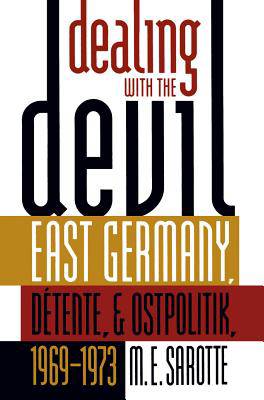
- Afhalen na 1 uur in een winkel met voorraad
- Gratis thuislevering in België vanaf € 30
- Ruim aanbod met 7 miljoen producten
- Afhalen na 1 uur in een winkel met voorraad
- Gratis thuislevering in België vanaf € 30
- Ruim aanbod met 7 miljoen producten
Omschrijving
Using new archival sources -- including previously secret documents of the East German secret police and Communist Party -- M. E. Sarotte goes behind the scenes of Cold War Germany during the era of detente, as East and West tried negotiation instead of confrontation to settle their differences. In Dealing with the Devil, she explores the motives of the German Democratic Republic and its Soviet backers in responding to both the detente initiatives, or Ostpolitik, of West Germany and the foreign policy of the United States under President Nixon.
Sarotte focuses on both public and secret contacts between the two halves of the German nation during Brandt's chancellorship, exposing the cynical artifices constructed by negotiators on both sides. Her analysis also details much of the superpower maneuvering in the era of detente, since German concerns were ever present in the minds of leaders in Washington and Moscow, and reveals the startling degree to which concern over China shaped European politics during this time. More generally, Dealing with the Devil presents an illuminating case study of how the relationship between center and periphery functioned in the Cold War Soviet empire.
Specificaties
Betrokkenen
- Auteur(s):
- Uitgeverij:
Inhoud
- Aantal bladzijden:
- 328
- Taal:
- Engels
- Reeks:
Eigenschappen
- Productcode (EAN):
- 9780807849156
- Verschijningsdatum:
- 16/04/2001
- Uitvoering:
- Paperback
- Formaat:
- Trade paperback (VS)
- Afmetingen:
- 156 mm x 234 mm
- Gewicht:
- 489 g

Alleen bij Standaard Boekhandel
Beoordelingen
We publiceren alleen reviews die voldoen aan de voorwaarden voor reviews. Bekijk onze voorwaarden voor reviews.









